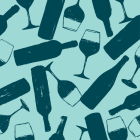Acker’s bicentennial auction brings in $10m
Acker’s electrifying bicentennial sale realised more than $10 million last week, when over 1,500 lots of fine and rare wine went up for grabs during the 12-hour auction.
The top lot of the sale was a 16-vintage vertical of magnums from Comte Liger-Belair La Romanee in their original wooden case, which sold for $198,400. Elsewhere, an imperial of 1961 Chateau Palmer went for $86,800, while Domaine de la Romanee-Conti dominated the rest of the sale’s top 10. Six bottes of 2011 Romanee-Conti, one Jeroboam of 1998 Romanee Conti, one Methuselah of 2007 Montrachet and two magnums of 2011 Romanee-Conti sold for $86,800, $80,600, $80,600 and $62,000 respectively.
Other highlights of the sale – which achieved an incredible 277 world records – included a magnum of Domaine Dujac's 1985 Clos de la Roche which sold for $39,680, and six magnums of 2000 Chateau Le Pin, each of which sold for $55,800.
"I have been rendered speechless after this celebratory bicentennial sale," said Acker chairman, John Kapon. “It was a thrill to witness the ravenous market for fine and rare wine this weekend.”
Bourgogne thrives in Hong Kong’s tough wine market
While French exports to Hong Kong to continue to fall overall, sales of wines from the Bourgogne region are flourishing, growing in both volume and value.
Exports rose 11.2% by value and 8.2% by volume for the first 11 months of 2019 on a year-on-year basis, hitting €61.8m and 1.08 million bottles respectively. Meanwhile, exports of French wine have dropped overall, with volumes down 18% and revenues down 24% in the 10 months to the end of October.
Hong Kong is now the fourth biggest market by value worldwide for Bourgogne wines and the 11th biggest by volume. Exports of white wine from the region have performed particularly strongly, up 10% by volume and 15% by value, while red wine has grown 6.4% and 10% respectively.
INAO appears to back down on Bourgogne labelling decision
The Institut National des Appellations d'Origine (INAO) appears to a have reversed a decision that could have seen 64 properties in Burgundy stripped of their right to use ‘Bourgogne’ as an AOC had they wanted to.
Last week, the appellation governing body met near Paris to discuss creating a more concrete delineation of Burgundy, and to revisit exactly who can use the term ‘Bourgogne’ on their labels. Their proposal, introduced last year, would allow many parts of the Beaujolais region – particularly those with limestone and clay soils, such as the Pierres Dorees in southern Beaujolais – to once again label their Pinots and Chardonnays as Bourgogne, including them in greater Burgundy.
However, to many people’s surprise, the proposal would also prevent 64 communes – all in the north of the region and including Chablis – from using Bourgogne as an AOC if they wished to.
As such, last week’s meeting saw some 400 Burgundians, including vintners and their elected officials, protest outside the Paris meeting. It now appears that the INAO has backed down on its initial plans for the northern areas, although its proposal to allow Beaujolais wines label themselves as ‘Bourgogne’ is apparently still going ahead.
It is worth noting, however, that any new laws concerning labelling and appellations will take a long time not only to agree upon, but to ultimately implement. As such, we can expect the situation to change further before a final decision is made.
Corks capture enough CO2 to offset footprint of bottle
Good news for those that take a sustainably-minded approach to their wine – new research shows that a wine bottle’s cork stopper retains enough carbon dioxide to offset the amount released during production of the whole glass bottle.
A study commissioned by Corticeira Amorim and shared with the drinks business reveals that a single natural cork stopper can capture up to 309g of CO2, while those used for sparkling wines can capture up to 562g, given the greater amount of cork used. According to Amorim, this means that a cork closure can offset the carbon footprint of a glass bottle, which releases between 300g-500g of CO2 on average during production, depending on their weight.
Speaking to the drinks business, Amorim’s communication director Carlos De Jesus said that the environmental benefits of cork stoppers often aren’t fully appreciated by wineries. “We want to get across the idea that wineries, when assessing their carbon footprint, should include all the packaging materials used and the carbon retained in them,” he said. “A company that has bought several million corks is sitting on large reservoir of carbon, so they should account for that.”






